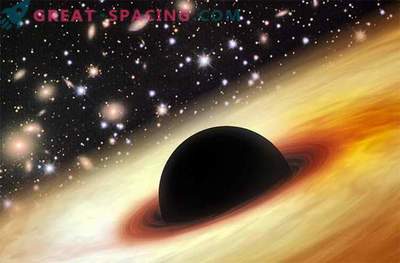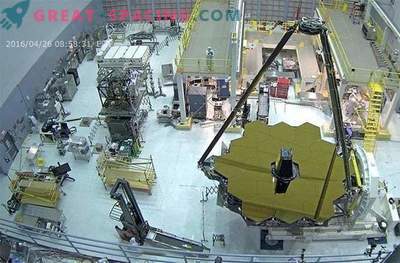
Black Hole Cygnus X
Earthlings hope that they will never come close to black holes, because we know that these cosmic monsters are able to absorb any object that has crossed the horizon of events. But black holes are interesting for studying, because they create one of the most energetic phenomena in space.
It is believed that in the process of feeding an important role is played by the proximity of the object to the black hole and the influence of a magnetic field. For the first time, researchers were able to measure the exact characteristics of a magnetic field near a black hole within the Milky Way.
Theoretical models predict that black holes are endowed with different sizes. It is believed that the basis of all massive galaxies hiding supermassive black holes. They exceed the solar mass millions and billions of times. They must play a crucial role in galactic formation and evolution.
But there are also small black holes formed after the death of massive stars or at the merging of stellar remnants (from neutron stars). When such black holes collide, they create gravitational waves.

Artistic vision of the supermassive black hole environment
Earlier studies of gamma-ray bursts suggested that large-scale magnetic fields may be formed near black holes, pulling out a jet of charged gas. A similar mechanism should work for supermassive black holes, whose jets are drawn out for millions of light years and fixed by earthly technology. But in reality, objects that are even 30,000 light-years distant are difficult to study.
Space Shake
The new study explored a black hole located at a distance of 8000 light years. It acts as part of the binary system V404 Swan - a black hole (10 times more massive than the Sun) and a solar star. The frequency of their rotation is 6.5 days.
The material from the star falls into a black hole, but along the way it heats up and glows brightly. If a magnetic field is present, a part can be thrown back into space in the form of a focused charged gas beam (plasma) or jet with a near-light speed. The exact mechanism has not yet been studied, but the duration of the flashes allows us to study them from the Earth.
June 15, 2015 V404 Swan has created such an outbreak, which lasted 2 weeks. Scientists tracked it with several telescopes and recorded that the brightness decreased on June 25. This suggests that the system has cooled. The models helped assess the strength of the magnetic field - 461 Gauss. It was much weaker than expected (10 times stronger than a magnet in the fridge).
The analysis showed that the area from which the light was coming did not expand, although it was predicted. Instead, we see that there is a hot halo of charged particles held in place by a magnetic field around a black hole. It is not yet clear what will happen with this halide gas further, but it can be perceived as one of the last intermediate stages of reaching the black hole.











































